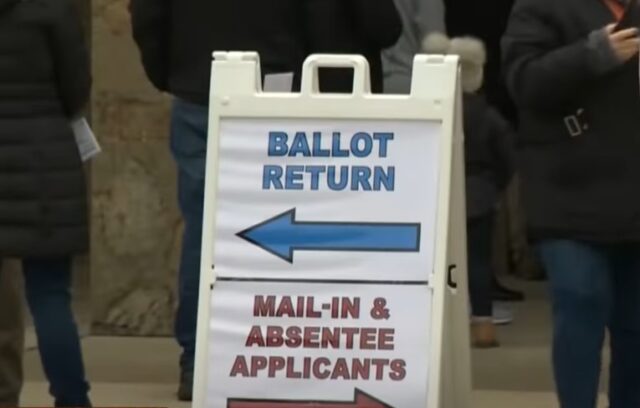Guest post by Jerome Corsi, Ph.D.
As reported yesterday, a Fulton County Superior Court Judge has ruled that county election officials must certify vote counts in the 2024 election even if they suspect voter fraud or errors. Judge Robert McBurney insisted in his order that disputes over voter or election fraud should be settled in court.
This ruling ignores the difficulty dozens of lawsuits have faced challenging the 2024 election. The reality is that, once an election is certified, the bar for challenging alleged fraud becomes almost insurmountably high. Judges have an easy out by ruling that plaintiffs alleging fraud in a certified election lack standing to have their cases heard.
Judge McBurney’s order is in direct contrast with a recent Federal District Court judge’s opinion.
On September 27, 2024, Federal District Court Judge Michael T. Liburdi rendered a decision in American Encore v. Adrian Fontes that upheld the right of a county supervisor to refuse to certify an election based on suspected fraud. In 2022, county supervisors in Cochise County, Arizona, refused to certify the mid-term election because they suspected fraud. Arizona Secretary of State Adrian Fontes invoked an Arizona State Board of Elections that allowed Fontes to ignore Cochise County in a final count to certify the election in Arizona.
Judge Liburdi ruled that by ignoring Cochise County, Fontes had violated the Fourteenth Amendment to the Constitution by disenfranchising the voters of that county. Judge Liburdi characterized the Arizona Board of Elections rule as “probably unprecedented in the history of the United States” because it “gives the Secretary of State nearly carte blanche authority to disenfranchise the ballots of potentially millions of Americans.”
While leftist judges seem determined to permit election officials to act, making election fraud easier to commit without criminal consequences, at least one court has recently ruled that would allow conscientious county supervisors to conduct investigations of possible fraud before being forced to certify a stolen election. Judge Liburdi’s decision empowers county supervisors to stop the rush to certify that has become an all too apparent essential part of mail-in ballot fraud.
If a state supervisor cannot challenge a voter count because of suspected voter or election fraud, what is the point of having state supervisors certifying elections? Judge McBurney’s order reduces the county certification of an election to a rubber-stamp process that encourages criminals to proceed without fear their illegal election schemes will ever be seriously investigated or contested.
Judge Liburdi’s ruling is a bulwark against secret algorithms in the state voter databases that create a pool of hidden “non-existent voters.” Beyond just creating “non-existent voters,” the cryptographic algorithms assign legitimate state voter IDs to the “non-existent voters.” This last step enables the criminal perpetrators to vote these “non-existent voters” as apparently “legal” mail-in votes in what could be sufficient quantities to steal otherwise losing elections.
State election boards do not conduct field canvassing efforts to verify that mail-in voters exist, confirm that they live at the registered addresses, or verify that they are legally qualified to vote. This failure allows criminal perpetrators to interject a cryptographic algorithm scheme into the database that allows the perpetrators to create “non-existent voters.”
The only way to address the problem of these phantom voters is to halt certification and analyze the database. However, Fontes’s “rush-rush” efforts to certify the 2022 mid-term election in Arizona suggest the Arizona Board of Election ruling was designed to prevent investigation and detection of mail-in ballot fraud..
Nor is this a hypothetical risk. To date, as reported on GodsFiveStones.com, computer graphics expert Andrew Paquette, Ph.D. has found algorithms in the boards of elections’ official voter registration lists of the following states: New York, Ohio, Wisconsin, and Pennsylvania with reports on algorithms found Texas, and New Jersey in progress. Dr. Paquette is now examining the state voter rolls in Arizona and Georgia.
Judge Liburdi’s ruling means that a county where an algorithm is found may safely refuse to certify its results on the suspicion that phantom voter fraud affected election outcomes in that county.
Likewise, a candidate who lost a close election after a late surge in mail-in ballots for the candidate’s opponent may have a legitimate argument that an algorithm was used in an election fraud scheme designed to benefit the opponent’s political party.
By analogy, if an investigation finds a casino has been using marked cards at the “21” tables, it would be impossible to prove that any gambler ever had legitimately lost a hand. In the same way, if an algorithm that can be used to cheat is present in a voter registration database, it is impossible to determine an honest outcome for that election.
Slowing down certification, even in one county, may gain the time needed to conduct a forensic examination to determine if the algorithm was used to trigger the mail-in votes in the objecting county and how many of the mail-in ballots cast in that county were fraudulent.
In conclusion, under Judge Liburdi’s ruling, all it may take to expose election fraud in 2024 should the voting counting patterns seen in the 2020 election be repeated in this election is for one county in a battleground state to refuse to certify the election.
GodsFiveStones.com is a tax-deductible 501(c)3 foundation created by Jerome R. Corsi, Ph.D., and Karladine Graves, M.D., managed by Capstone Legacy Foundation.











